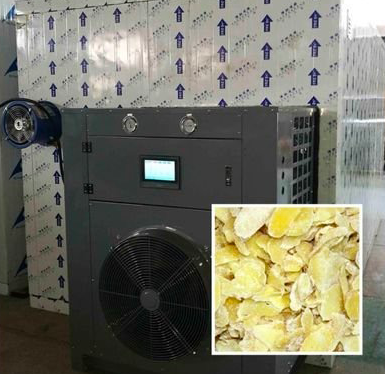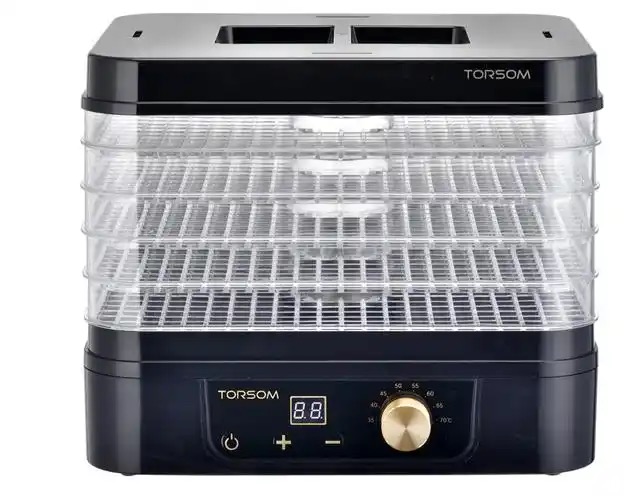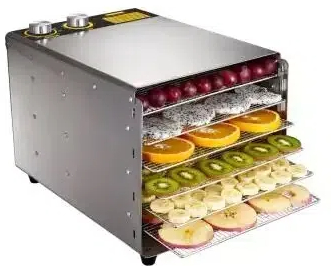
Content Menu
● Understanding Heat Pump Technology
● Advantages of Heat Pump Dryers
>> Energy Efficiency
>> Versatility in Installation
>> Gentle Drying Process
● The Food Drying Process with Heat Pump Technology
● Applications of Heat Pump Dryers in Food Processing
>> Case Study: Dried Fruit Production
● Maintenance Considerations
● Environmental Impact of Heat Pump Dryers
● Conclusion
● Frequently Asked Questions
>> 1. What are heat pump dryers best used for?
>> 2. How long does it take to dry food using a heat pump dryer?
>> 3. Do I need special installation for a heat pump dryer?
>> 4. Are heat pump dryers more expensive than traditional dryers?
>> 5. Can I use a heat pump dryer for delicate fabrics?
Heat pump dryers have revolutionized the way we dry clothes and, more importantly, how we dehydrate food. Unlike traditional dryers that require external vents to expel moist air, heat pump dryers utilize a closed-loop system that recycles air, making them energy efficient and versatile. This article delves into the intricacies of heat pump dryers, particularly focusing on their application in food drying processes, which is essential for manufacturers and consumers alike.

Understanding Heat Pump Technology
Heat pump technology operates on a simple principle: it moves heat from one place to another instead of generating heat directly. This process involves two primary components: an evaporator and a condenser.
- Evaporator: In the evaporator, refrigerant absorbs heat from the environment (or from the air inside the dryer) and evaporates into gas.
- Condenser: The gas then moves to the condenser, where it releases the absorbed heat into the dryer drum, warming the air that circulates around the food or clothing being dried.
This cycle continues, allowing for efficient moisture removal without the need for venting outside.
Advantages of Heat Pump Dryers
Energy Efficiency
One of the standout features of heat pump dryers is their energy efficiency. They consume significantly less electricity compared to traditional dryers because they recycle hot air rather than generating new hot air continuously. This recycling process not only reduces energy costs but also minimizes environmental impact.
Versatility in Installation
Since heat pump dryers do not require external venting, they can be installed in various locations within a home or facility. This flexibility is particularly advantageous for urban dwellers with limited space or for businesses that need to optimize their layout.
Gentle Drying Process
Heat pump dryers operate at lower temperatures than conventional dryers. This gentler drying process is beneficial for preserving the quality of fabrics and food products. For food drying, this means that nutrients, flavors, and colors are better preserved compared to higher-temperature drying methods.
The Food Drying Process with Heat Pump Technology
In the context of food drying, heat pump dryers are particularly effective. Here's how they work:
1. Air Circulation: The dryer pulls in ambient air and heats it using the heat pump system.
2. Moisture Absorption: The warm air is then circulated through the drying chamber containing the food items. As it passes over the food, moisture evaporates from the surface.
3. Condensation: The moist air exits the drying chamber and passes through a cooling system where moisture condenses back into liquid water. This water is either collected in a tank or drained away.
4. Reheating: The now-dry air is reheated and sent back into the drying chamber to continue the cycle.
This method allows for efficient moisture removal while maintaining a controlled environment that prevents overheating and nutrient loss.

Applications of Heat Pump Dryers in Food Processing
Heat pump dryers are increasingly used in various food processing applications:
- Fruits and Vegetables: Ideal for dehydrating fruits and vegetables while retaining their natural flavors and nutrients. For instance, apples can be dried into healthy snacks without losing their crispness or nutritional value.
- Herbs and Spices: Gentle drying prevents loss of essential oils and aromatic compounds. This is crucial for maintaining flavor intensity in culinary applications.
- Meat Products: Suitable for making jerky or other dried meat products without compromising safety or quality. The controlled environment ensures that harmful bacteria are minimized during the drying process.
- Grains and Nuts: Effective in reducing moisture content to prolong shelf life. For example, nuts can be dried to prevent rancidity while maintaining their crunchy texture.
Case Study: Dried Fruit Production
To illustrate how heat pump dryers work in practice, consider a company specializing in dried fruit production. By using heat pump technology, they can efficiently dry apples, bananas, and mangoes while preserving their vibrant colors and flavors. The process begins with slicing fresh fruit into uniform pieces to ensure even drying.
The fruit slices are then placed on trays inside the heat pump dryer. As warm air circulates around them, moisture is gradually removed without overheating. After several hours, depending on the type of fruit and desired dryness level, the fruit emerges perfectly dehydrated—ready for packaging or further processing into snacks.
Maintenance Considerations
While heat pump dryers are generally low-maintenance due to their closed-loop system, some care is necessary:
- Cleaning Filters: Regularly clean lint filters to ensure optimal airflow. Clogged filters can reduce efficiency and increase drying times.
- Water Reservoir: If your model collects water, empty it regularly to prevent overflow. Some models may include a drainage option that eliminates this task altogether.
- Check Seals: Ensure that door seals are intact to maintain efficiency. Damaged seals can lead to air leaks, which compromise performance.
- Periodic Professional Servicing: Consider scheduling professional maintenance every few years to keep your unit running smoothly and efficiently.
Environmental Impact of Heat Pump Dryers
The environmental benefits of using heat pump dryers extend beyond energy savings. By reducing reliance on fossil fuels for heating through electricity-efficient designs, these appliances contribute positively to reducing greenhouse gas emissions associated with traditional drying methods.
Moreover, by preserving food quality better than conventional dehydrators or ovens—which often operate at higher temperatures—heat pump dryers minimize food waste by extending shelf life while retaining essential nutrients.
Conclusion
Heat pump dryers represent a significant advancement in both laundry technology and food processing methods. Their ability to operate without external vents makes them an excellent choice for both residential and commercial applications. By utilizing energy-efficient practices, these dryers not only save on utility bills but also contribute positively to environmental sustainability.
As businesses look for ways to improve efficiency while minimizing their carbon footprint, heat pump technology stands out as a viable solution in various sectors beyond just clothing—most notably in food processing industries where quality preservation is paramount.

Frequently Asked Questions
1. What are heat pump dryers best used for?
Heat pump dryers are ideal for drying clothes gently as well as dehydrating various foods like fruits, vegetables, herbs, and meats while preserving their nutritional value.
2. How long does it take to dry food using a heat pump dryer?
Drying times vary based on the type of food and its moisture content but typically take longer than traditional methods due to lower operating temperatures.
3. Do I need special installation for a heat pump dryer?
No, heat pump dryers do not require venting outside; however, they should be placed in a well-ventilated area to ensure proper airflow.
4. Are heat pump dryers more expensive than traditional dryers?
While they may have a higher initial cost, their energy efficiency often results in lower operating costs over time.
5. Can I use a heat pump dryer for delicate fabrics?
Yes! Heat pump dryers operate at lower temperatures, making them suitable for delicate fabrics that might be damaged by conventional dryers.












